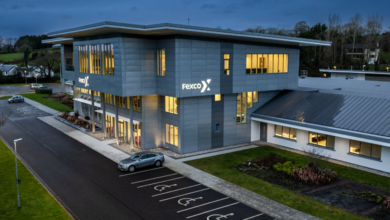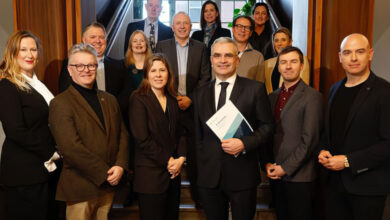From intent to impact: Ireland’s next step in AI and cloud leadership

Ireland has established itself as a hub for cloud and digital services in Europe. This is reflected in daily conversations with our customers and partners – including public bodies laying the groundwork for smarter, connected services, writes Robbie Byrne, Country Manager in Ireland, Red Hat.
Strong infrastructure, consistent foreign direct investment and a tech-savvy workforce have positioned the country well to take on opportunities in AI and hybrid cloud.
But future progress will not be defined by infrastructure alone. It will depend on how effectively organisations align strategy, skills and technology to extract meaningful outcomes – particularly in areas where public services and citizen impact are at stake.
AI is no longer a distant goal. It is already testing how well organisations can execute.
According to Red Hat’s research, 95 per cent of IT managers in Ireland plan to increase investment in AI over the next 12 months. 93 per cent will do the same for cloud. These figures put Ireland ahead of many peers across Europe. It is encouraging to see – but it also raises the question: how ready are organisations to act on that investment in a way that is sustainable, cost-effective and aligned?
A strategic gap, not just a technical one
Our survey, which examined the priorities and challenges facing IT managers in cloud and AI adoption, uncovered a difference between Ireland and other European markets.
While countries like the UK identified AI as their most significant skills gap, IT managers in Ireland pointed to strategic thinking and the ability to address business-level challenges – cited by 44 per cent as the top area of concern. That stood out to me. While we are building real technical strength, the challenge now is turning that into meaningful, organisation-wide outcomes – a critical next step for delivering trusted, data-driven public services.
AI adoption is not only about adding tools or hiring data scientists. It requires clarity around what AI is being used for, how it will integrate with existing systems and how outcomes will be governed.
Cost remains central to cloud strategy
While AI continues to dominate headlines, cost optimisation remains the top priority for IT managers in Ireland as they evolve their cloud strategies, cited by 71 per cent of respondents.
This reflects a maturing market that is moved past early adoption and is now grappling with sprawl and rising costs. For public sector teams managing tight budgets and legacy systems, these challenges are acute.
In many cases, applications have been moved to the cloud without being rearchitected. As organisations begin layering AI workloads onto these systems, issues around scalability, data movement and cost control become pressing.
That is why we are seeing renewed focus on platform-based approaches – using technologies like Red Hat OpenShift to refactor legacy applications, modernise delivery pipelines and centralise governance across hybrid environments.
Siloed teams are slowing progress
Almost every IT manager we spoke to (96 per cent) mentioned a key challenge: siloed teams are creating obstacles for cloud and AI adoption. For more than half, these silos are a frequent issue.
We have seen the impact: increased costs, limited visibility and difficulty in adopting new technologies. In the public sector, this means slower service delivery and challenges in scaling digital programmes. As AI becomes more embedded across functions, the cost of fragmentation will rise.
Addressing this requires new ways of working. Organisations are adopting platform engineering and modern operating models like Team Topologies, which create clearer interfaces between teams and enable efficient collaboration.
When combined with enterprise automation, through platforms like Red Hat Ansible Automation Platform, these approaches reduce manual effort, improve security posture and ensure governance at scale.
AI is shifting to smaller, targeted models
While attention often focuses on large language models (LLMs), our research shows the majority of IT managers in Ireland (84 per cent) cite domain-specific models as a key factor in establishing trust in an enterprise approach to generative AI.
We are seeing interest in smaller models that perform specific tasks effectively while using significantly fewer computational resources. For example, a 10 billion parameter small language model (SLM) can be optimised for enterprise use at a fraction of the cost and complexity of a 400 billion parameter LLM.
This is relevant for organisations with sensitive data – including those in the public sector – where training models on-premise using synthetic or internal data offers greater control over privacy, security and compliance.
Their smaller footprint makes them more flexible and easier to deploy across hybrid environments, enabling organisations to run AI where it delivers the most value.
Trust is no longer optional
AI adoption will not scale without trust. The majority (85 per cent) of IT managers in Ireland say transparency, modifiability and explainability are essential to trusting enterprise AI models.
Open source plays a critical role. It gives organisations greater visibility into how platforms, tools and models are built, how they perform and how they can be improved. They also help democratise AI and overcome skills gaps. For example, the open source project InstructLab, developed by Red Hat and IBM, makes AI development more accessible to domain experts with relevant business knowledge, not just data scientists.
Hosting AI workloads within a controlled environment also matters. This is relevant for government departments and agencies that handle sensitive data or operate under strict compliance frameworks. With Red Hat OpenShift, organisations can deploy and govern the full lifecycle of AI applications in a common way across their preferred environments, keeping data where they choose.
From building platforms to driving outcomes
Ireland has proven its ability to build infrastructure, attract global players and scale fast. But the next stage of digital leadership will not be defined by what is built – it will be defined by how well it is used.
The opportunity is to move from deploying tools to shaping outcomes. At Red Hat, we are proud to support Irish enterprises on that journey – with open, hybrid platforms that reduce complexity, enable innovation and build trust in AI systems from the ground up.
Discover how Red Hat can support your AI and cloud journey
W: www.redhat.com







